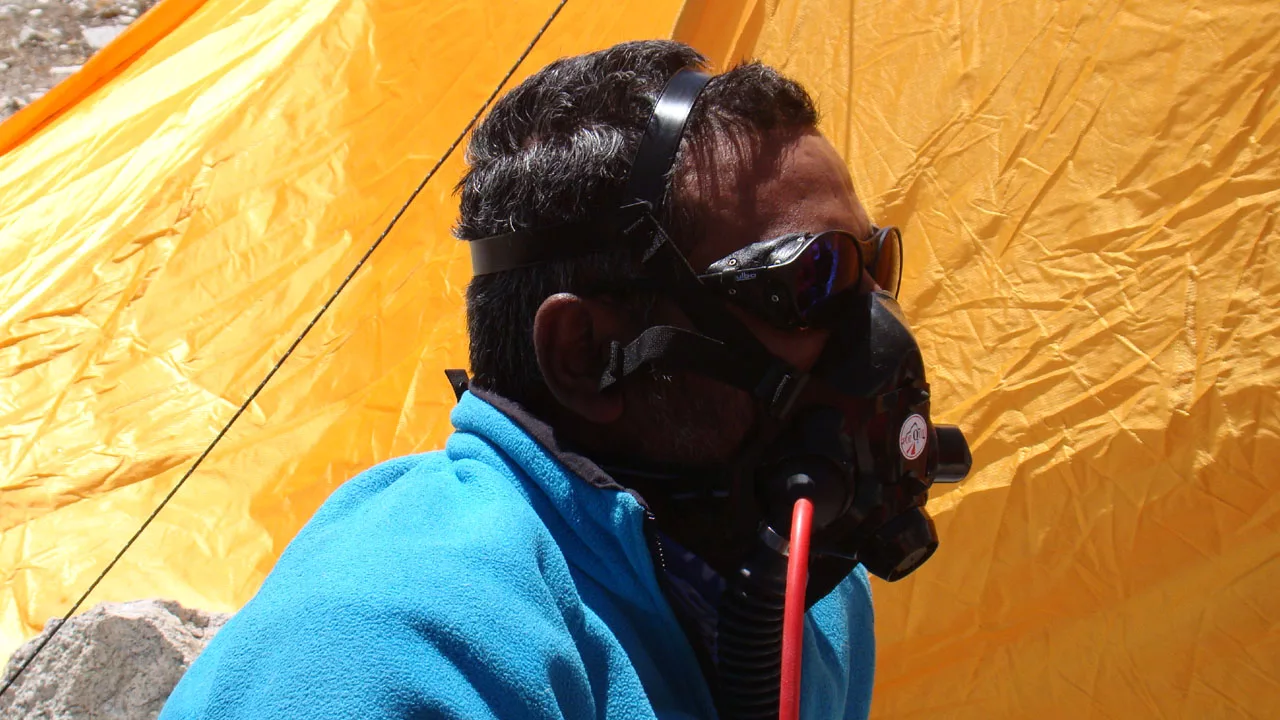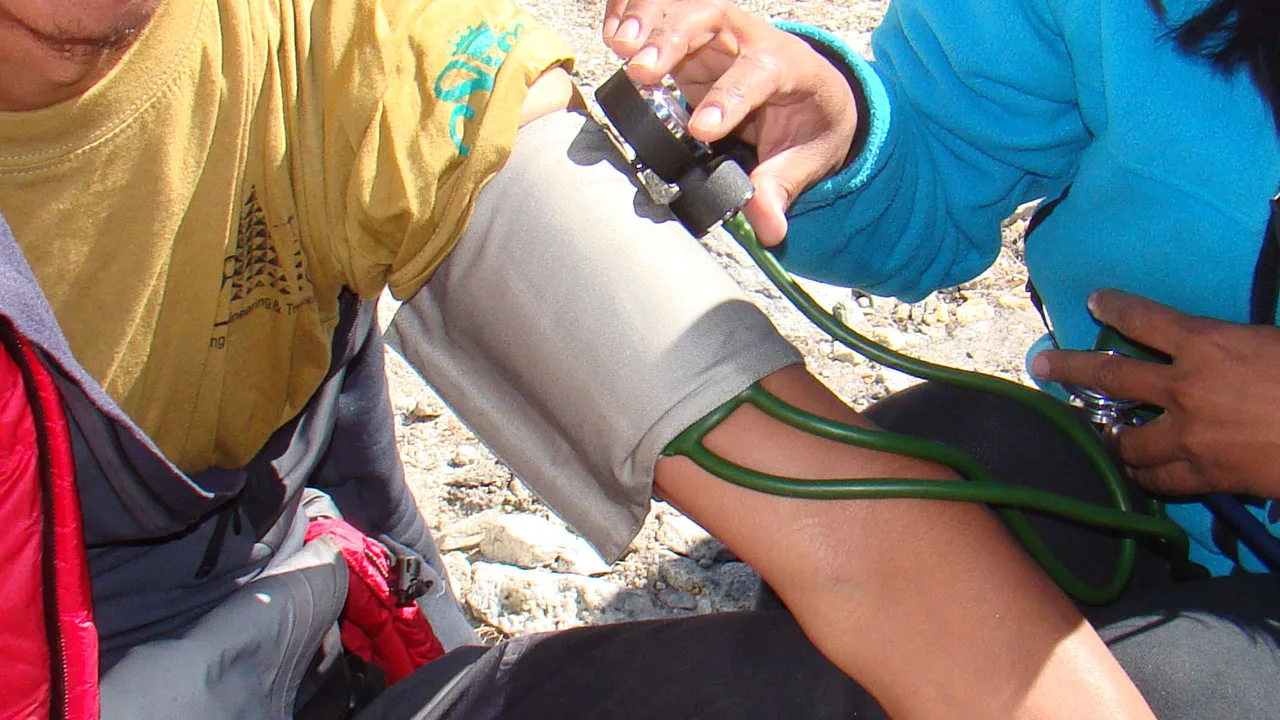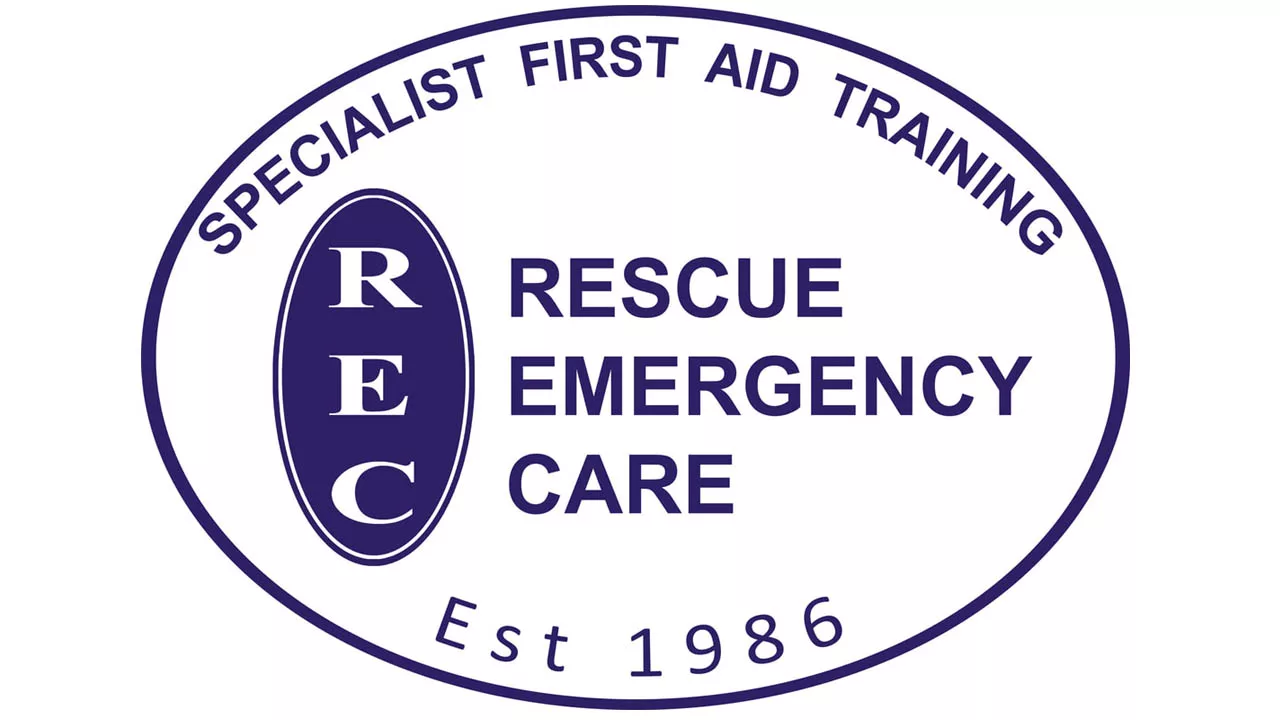AMS (Acute Mountain Sickness)
Athlete Health
Known :
AMS (Acute mountain sickness) is also known as altitude sickness or mountain sickness, altitude illness, hypobaropathy, Acosta disease, puna, and soroche in South America.
What?
The air grows thinner when you rise or journey (ascend) to altitude. Because of the reduced air pressure, there is less oxygen accessible for each breath.
This absence of oxygen causes changes in your body that aid in its adaptation to its new environment. Acclimatization refers to these typical adjustments. This indicates that your body is adjusting to the environment. Breathing quicker than normal, being shorter of breath with increasing activity (exertion), and passing urine more often are all changes.
When your body is not acclimatized to the altitude, you may get acute mountain sickness (AMS). Acute mountain sickness AMS is a condition induced by being at a high altitude with low air pressure without adequate acclimatization (the process of gradual exposure). If it happens, it will happen at elevations exceeding 8,000 feet (2,500 meters) – 8000 meters is a normal height for many ski resorts. Above 3,600 meters, more severe symptoms are common (about 12,000 feet). Acute mountain sickness can escalate to high-altitude pulmonary edema (HAPE) or high-altitude cerebral edema (HACE) (HACE).
“Altitude sickness is a syndrome caused by low inspired oxygen pressure (as at high altitude) and characterized by nausea, headache, dyspnea, malaise, and insomnia; in severe instances, pulmonary edema and adult respiratory distress syndrome can occur.”
– Med lexicon’s medical dictionary
Where?
At heights of up to 2500m, the equivalent atmospheric pressure to which airplane cabins are pressurized, most individuals are OK. However, even at roughly 1500m above sea level, you may have greater dyspnea during activity than usual, and your night vision may be compromised. Altitude sickness symptoms become more obvious at 2500m.
How?
At sea level, the atmospheric oxygen content is around 21%, and the barometric pressure is about 760 mmHg. The 21% remains constant at higher altitudes; however, the number of oxygen molecules each breath decreases. At a height of roughly 5,500 meters (18,000 feet), each breath contains about half the average quantity of oxygen (compared to sea level). To compensate for the lack of oxygen, the person must breathe quicker and their heart must beat faster as well. Even while quicker breathing boosts blood oxygen levels, the concentrations do not reach sea level.

As you ascend in altitude, fluid can leak from microscopic blood arteries (capillaries), leading to potentially deadly fluid collection in the lungs and/or brain. There is a considerable danger of life-threatening diseases if a person continues to go to greater elevations without appropriate acclimatization.
Who?
Anyone who travels to elevations above 2500m is at risk of developing acute mountain sickness. It usually doesn’t become apparent until you’ve been at that height for a few hours. Part of the enigma surrounding severe mountain sickness is the inability to anticipate who will be affected. There are several reports of fit and healthy persons being severely hampered by symptoms of acute mountain sickness while their elderly acquaintances felt great.

Symptoms :
The most noticeable symptom is generally a headache, but most patients also feel nausea and possibly vomiting, tiredness, dizziness, and poor sleep. The symptoms are extremely comparable to a nasty hangover.
Calculate :
The Lake Louise score is a criterion for diagnosing acute mountain sickness (AMS). You may perform this yourself to determine how serious your symptoms are and what they indicate.
The scoring is as follows:
| Symptom | Severity | Score |
| Headache | No headache Mild headache Moderate headache Severe headache | 0 1 2 3 |
| Gut (gastrointestinal) symptoms | None Poor appetite or nausea Moderate nausea and/or vomiting Severe nausea and/or vomiting | 0 1 2 3 |
| Fatigue and/or weakness | Not tired or weak Mild fatigue/weakness Moderate fatigue/weakness Severe fatigue/weakness | 0 1 2 3 |
| Dizziness/light-headedness | Not dizzy Mild dizziness Moderate dizziness Severe dizziness | 0 1 2 3 |
| Difficulty sleeping | Slept as well as usual Did not sleep as well as usual Woke many times, poor sleep Could not sleep at all | 0 1 2 3 |
A total score of 3 to 5 = mild AMS and 6 or more = severe AMS. Remember that any symptoms at altitude are altitude illnesses until proven otherwise.
What should I do if I get acute mountain sickness?
If you have mild acute mountain sickness (AMS), the first thing you should do is relax at the same altitude. Symptoms usually diminish within 24 hours with rest and pain relievers ibuprofen. If symptoms do not improve or worsen, go to the next step (descend). It is normal for even a short descent and rests to greatly alleviate symptoms. If you have recovered and your schedule permits it, you may be able to climb up again (re-ascend).

More about medications:
- Consult your doctor before keeping any medication for yourself!
Acetazolamide (Diamox®) can be used to prevent and treat acute mountain sickness (AMS). There is strong evidence that it works. Acetazolamide accelerates the rate at which you adjust to new surroundings (acclimatization), however, it does not disguise the symptoms of AMS. But it does not protect against increasing AMS as one climbs higher (ascent). Acetazolamide cannot be purchased without a prescription from your doctor. Acetazolamide is usually taken twice a day at a dose of 125 mg. Pins and needles are a typical adverse effect of acetazolamide.
There is some evidence that dexamethasone, a steroid, can be used to prevent AMS. This is not, however, suggested for routine usage in high-altitude climbing.
There is currently no solid evidence for any additional drugs (including Ginkgo Biloba). Travelers reaching high altitudes in various regions of South America may be offered coca leaves. Tea may be made from them, or the leaves can be eaten. Although they are known to be modest stimulants, there is no evidence that they assist in preventing AMS.
Join First Aid Course
